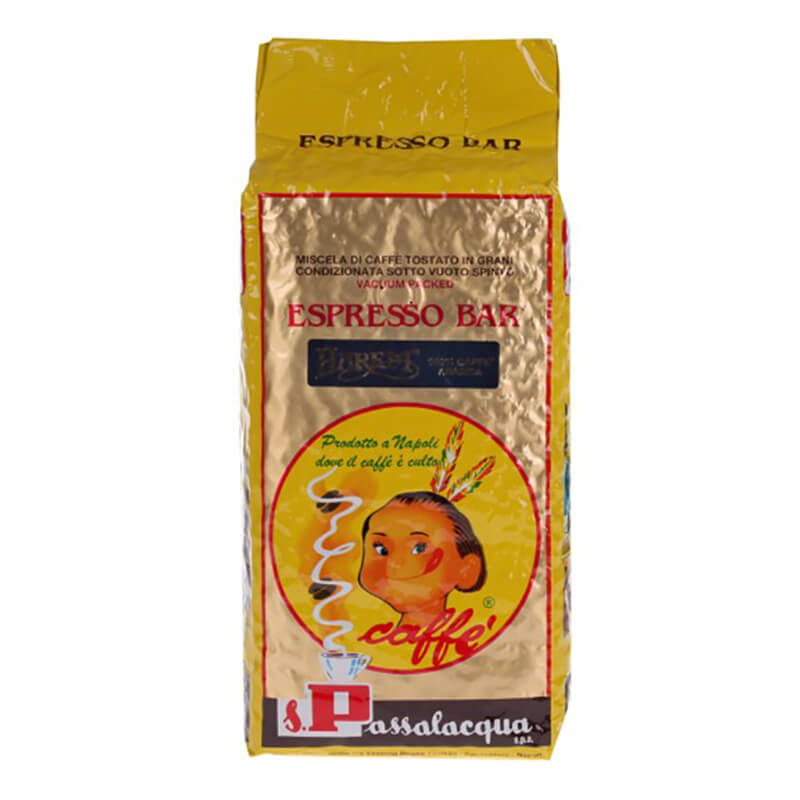

AROMATICO FLAVOR PROFILE
The taste profile created by Aromatico offers you an orientation within the coffee taste worlds. Of course, a taste sensation always remains an individual and subjective experience, so the assessment of a coffee or espresso will always vary a little. And that's a good thing, because that's what ultimately makes the "coffee myth".
OUR BASIC COFFEE PARAMETERS:
To help you choose a coffee, we have established some basic parameters for evaluating its taste. Regardless of how a coffee tastes to us, coffee touches all of our taste senses. The aroma of freshly ground coffee hits the nose first. After it is brewed, the coffee then reaches the tongue and finally the palate. Finally, it often leaves a savory aftertaste. There are numerous myths surrounding the aroma spectrum of coffee's aftertaste. Within the range from sweet to tart, this is often remembered the longest. The seven basic parameters selected by Aromatico are explained in more detail below.
Degree of roasting

Roasting refines the coffee beans. It is through roasting that coffee develops its typical aroma. During traditional roasting, the coffee beans are heated for a certain time. The interplay of chemical and physical processes leads to the formation of up to 800 different aromas, the expression of which can produce acidity, sweetness or bitterness. The roasting master knows exactly how to adjust the time and temperature so that the flavor nuances of the provenances are optimally emphasized. Traditional drum roasting is an artisanal process that requires a great deal of skill and experience. Depending on the roasting, a coffee blend can result in a different product. The roasting depends on the taste preference and the preferred preparation method. A roast that tends to be lighter often produces a filter coffee, and a roast that tends to be darker tends to produce an espresso. The important factors are roasting time and roasting temperature. These two components play a decisive role. With a light roast, the more fruity notes come to the fore. The roasting is finished between the "First Crack", the first crack, and the "Second Crack". This is the first and second cracking, respectively, comparable to the popping of popcorn, and also produces a pleasant smell of hay. The coffee beans have a light brown hue. Single-origin coffees are preferably lightly roasted to bring out the typical flavor characteristics of the respective provenance. A medium roast combines a still slightly preserved fruity note with an already slightly developed bitterness. The coffee beans present themselves in a rich brown tone. A dark roast corresponds to the typical Italian roast, which is finished after the "second crack". The color of the coffee beans is a rich black-brown. With darker roasting degrees, the fruity notes move into the background, but the bitter notes as well as a full body come to the fore. Therefore, this degree of roast is very suitable for preparation with high water pressure as in an espresso machine. Each coffee bean has a different composition of coffee ingredients due to its provenance (its growing region), its quality and its preparation method. Roasting profiles are created to bring out the nuances typical of the taste. The exact details of the roasting profiles are the very special secret of each roasting master.
Strength

The perception of the strength of a coffee is always also a question of habit and can vary individually. The impression of strength in a sip of coffee can be created by various factors. Firstly, by the choice of coffee beans, secondly by the roasting and last but not least by the ratio of the amount of ground coffee to the amount of water. Typically, Robusta coffee beans can make a coffee seem strong. A Robusta content can create pleasant bitter notes as well as chocolaty hints in the taste. However, a strong coffee can also be produced on the basis of pure Arabica beans with a darker roast. Especially in espressos, the strength in taste is highly appreciated. The dark Italian roast provides an intense, strong taste experience. The further south in Italy an espresso is roasted, the higher the Robusta content usually is in a classic espresso blend. Another component, independent of coffee selection, is preparation. When more coffee grounds meet less water, the result tends to be a more intense coffee experience. The time it takes for the water to pass through the coffee grounds also has an impact. Short water contact, i.e. a fast cycle time on a portafilter machine, tends to produce a more acidic espresso that can be perceived as very strong. For lovers:inside of intense coffee enjoyment, a strong espresso is enjoyed neat. Otherwise, strong espressos are particularly suitable for coffee specialties with milk. A strong espresso composition can stand out in flavor against the milk and/or harmonize with it.
Fruit note

A fresh fruity note - often perceived or described as a slight acidity - is often the first taste impression when tasting coffee. Fruity flavors are loved or shunned. Connoisseurs appreciate their varied, characteristic notes. The multifaceted characteristics between fruity note and acidity can be classified differently. Typical taste sensations are floral-fruity, i.e. floral, fragrant or fruity, with hints of citrus or berry notes. The intensities vary depending on the blend and roast. On the one hand, there are certain growing regions whose coffees have a particular fruity note, such as African provenances, and on the other hand, a lighter roast supports the development of a pronounced fruity note. Brazilian coffees usually offer a rather mild fruit note, while Colombian coffees are predominantly characterized by more intense fruit notes. Ethiopian and Kenyan highland coffees, on the other hand, are often defined by a tangy fruit note. Asian coffee beans, on the other hand, tend to have less acidity. In addition, the preparation method of the coffee beans also has an influence on the taste. Clearer fruity notes tend to be more prominent in washed coffees. Taste perception varies from individual to individual. The subjective perception of fruity flavor nuances depends on the tongue and palate.
Body

The body of a coffee is best described as a velvety palate sensation. The first sip of the coffee is of the greatest importance here. The coffee leaves a certain lightness or heaviness in the mouth. The fullness or richness of the coffee remains in the memory and can still be tasted in the finish. The individual mouthfeel decides which coffee is the right choice. The complexity of coffee can be compared to the body of a wine. A round body creates a dense, long-lasting coffee sensation, a kind of aroma film, in the mouth. A full body does not automatically come from a dark roast or a high caffeine content; the complexity within the perceived fullness lies in the bean itself. Arabica coffee beans tend to allow a lighter, but at the same time very complex body to emerge. With Robusta coffee beans, the art is to roast them to perfection so that the astringent note does not assert itself, but the body can fully develop. In general, dark-roasted coffee beans are described as having more body than light-roasted coffee beans.
Balance

Harmony and pleasure are close together. A balanced flavor leaves a pleasant mouthfeel. If the enjoyment of a coffee immediately awakens the anticipation of the next sip of coffee, it has been successful. Balance describes the equilibrium between fruit and bitter notes, aroma and overall body. The art of roasting, in turn, influences the interplay of the flavor characteristics with each other. Sometimes one component is deliberately placed in the foreground to emphasize a particular flavor profile. The coordination of the various flavor nuances results in an overall coffee culinary position.
Crema

A velvety, golden-brown crema crowns the espresso. Crema is the term used to describe the upper foam layer of espresso or Caffè Crema. Filter coffees have no crema. The crema can be influenced by the preparation method and the coffee beans used. Arabica coffee beans often produce a light crema. The more Robusta coffee beans are included in a blend, the firmer and denser the crema can become. The pressure of brewing with a portafilter or fully automatic machine causes small air bubbles to come together with the coffee flavors, creating a hazelnut-brown and marbled crema. It is the distinguishing mark of a successful EXTRAKTION. Regardless of the coffee used, the crema indicates whether the extraction was successful or whether it was under- or over-extracted. Under-extraction results in only a very light crema that dissipates quickly. Overextraction results in an irregular, very dark and blotchy crema. To track down the source of the error, it is advisable to check the grind, the amount of coffee powder, the brewing temperature, the tamper pressure or the extraction time again in detail. A perfect crema is dense, marbled brown but not too mottled, and does not dissolve but remains on the espresso. The magic of crema is that the sugar - which can be added to an espresso as desired - lingers on the crema for about 5 seconds before sinking elegantly through the crema into the espresso. A spectacle that many fragrant lovers enjoy watching with fascination.
Caffeine

Some drink coffee exclusively to get a caffeine kick that also tastes delicious. Others prefer the taste and enjoy the coffee, but would like to do without the effect of caffeine. Even the poet Johann Wolfgang von Goethe was an avid coffee drinker. However, he is said to have suffered from sleep problems. He therefore commissioned a friend, Friedlieb Ferdinand Runge, to separate the caffeine from the coffee. Based on this, the idea of decaffeination was born. Arabica coffee beans, at 1.0 % to 1.8 %, naturally have a lower caffeine content than Robusta coffee beans, at 1.8 % to 2.5 %. A effect usually occurs about 30 - 45 minutes after coffee consumption. The half-life of caffeine varies from individual to individual, but lasts about 3 to 4 hours. In order for a coffee or espresso to be called decaffeinated, it may contain a maximum of 0.1 % residual caffeine in the EU; in most cases, this limit is even exceeded. Thus, it is possible to drink 10 - 15 cups of decaffeinated coffee to reach the caffeine content of a regular cup of coffee. Decaffeinated coffees and espressos allow coffee enjoyment at any time of day.
OUR COFFEE RECOMMENDATIONS


























